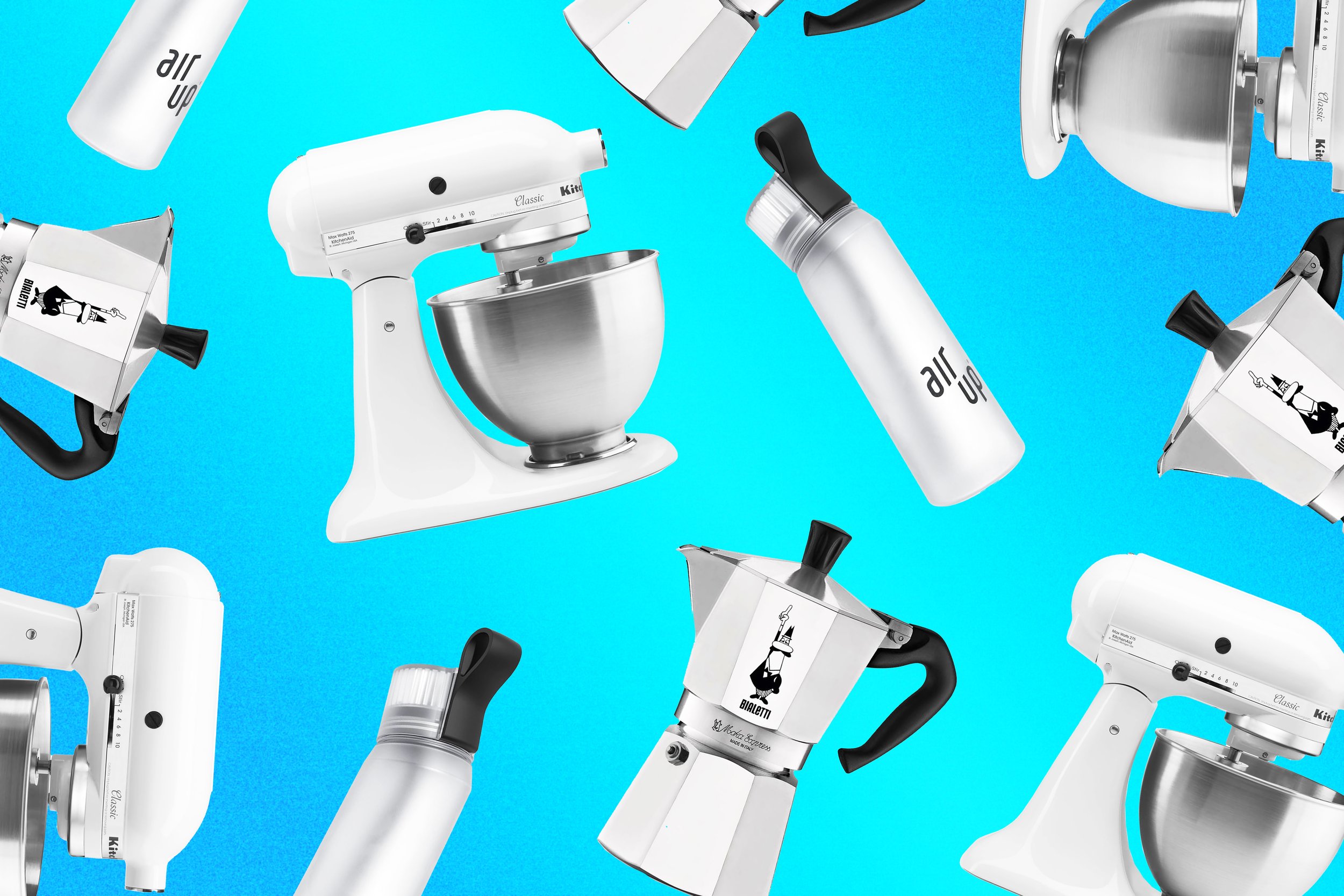After Having Splitting Headaches for Years in the Spring, I Finally Found the Solution
“We also cycled through multiple humidifiers…”
BY STEPHNIE @THE BRIMLY TEST KITCHENApril 15, 2025

Image Source/Editors @ Brimly
The selection of the products showcased on Brimly is made independently by our editors. Nevertheless, if you buy something through our retail links, we may earn a commission as an affiliate.
Every spring, without fail, I used to get splitting sinus headaches that could literally keep me up all night. A bit of background: I grew up in a tropical country where the air is warm and humid year-round, and I never even owned a humidifier. But after moving to the U.S., my sinuses didn't know what hit them. The dry winter heating and pollen-filled spring air made breathing quite a bit harder, and I began suffering from relentless sinus pressure and headaches each spring.
I tried to cope using every trick in the book. Over-the-counter decongestant sprays provided brief relief but burned my nose, leading to rebound stuffiness. I guzzled herbal teas (ginger, peppermint – you name it), hoping to soothe from the inside out. I took steaming hot showers and even did that old trick of leaning over a bowl of hot water with a towel over my head. My husband would find me lying in bed with warm compresses on my face to loosen the pressure. I even dabbled in homeopathy out of desperation – little sugar pills and strange herbal drops that promised to fix my sinuses. Nothing worked for long. By the time April rolled around each year, I was resigned to living on painkillers and nasal saline rinses, gritting my teeth through each headache and dreading the beautiful blooming trees outside.
view:“My actual battle station during sinus season. I tried it all, hoping something—anything—would work.”— Image courtesy of Stephnie Pedro
Desperate Times, Failed Remedies
Over the years, we also cycled through multiple humidifiers in a quest to fix our home's dry air. Everyone told me a humidifier could help with sinus issues – in theory, moist air should keep my nasal passages hydrated and pain-free. I started with a basic cool-mist ultrasonic humidifier (one of those quiet teardrop-shaped ones). It did put water in the air, but to my surprise, the cool mist made me feel chilled and didn't really relieve the pressure in my head. I'd wake up congested as ever. Worse, I began noticing a fine white dust coating my bedside table – the residue of minerals from our water. This "bonus" dust was also getting sensed by our air purifier; its sensor light would turn angry red, thinking the air quality had tanked. So that was a bust.
Next, I tried an evaporative humidifier with a wick filter (the kind that blows air through a damp filter). The air felt less artificially cool with that one, but it had issues, too. The built-in fan was loud – a dull fan noise humming all night – not conducive to sleep. And the filter? It got a bit stinky at times. My sinuses weren't impressed.
So here I was, sinus headaches still raging each spring despite humidifiers, sprays, potions, and prayers. "Maybe I would have to constantly consume painkillers and dread Pennsylvania's pollen count every year," I started to think.
A Surprise Solution
One morning, my husband left for the store very early to find a solution and returned with a box with the familiar Vicks logo. He was sure that was going to be the answer. Honestly, I was skeptical. When he unboxed it, the device was the Vicks Warm Moisture Humidifier. It's a simple tabletop humidifier that produces a warm mist instead of a cool spray.
I eyed its features warily as we unboxed it. It has just a single dial on the front – no digital screens, no smart app, nothing fancy. (Part of me thought, "Great, another basic humidifier.”) But that dial has two settings: Low and High. We filled the tank with water and set it on the high setting. Within minutes, it was silently emitting visible wisps of warm steam. The whole thing was practically whisper-quiet – just a faint bubbling sound if you listened hard.
That night, I let the warm mist fill our bedroom. I also discovered that the humidifier has a little medicine cup at the top, where you can pour in Vicks VapoSteam. It turns the humidifier into a gentle vaporizer, diffusing a menthol scent into the air. I added just a capful of VapoSteam—if nothing else, my room would smell like a cough drop. The unit also has a slot for Vicks VapoPads (being a Vicks product, of course, they included this).
Vicks Warm Moisture Humidifier
STEAM: WARM MIST
• USE: DESIGNED FOR SINUS RELIEF
• NOISE: FAN-FREE & WHISPER QUIET
• BUILD: FILTER-FREE, EASY TO CLEAN
• BONUS: COMPATIBLE WITH VAPOSTEAM & VAPOPADSWaking Up to Relief
The following day, I woke up and just breathed. There was no pain in my forehead. For the first time in recent memory, I hadn't been woken up at 5 A.M. by throbbing sinus pressure. The air in the room felt different – comfortable, not the usual dry breeze from our heater. I even dared to gently wiggle my head side to side (my weird test for sinus headaches: if it hurts to wiggle, you know you're in trouble) and noticed only minimal pressure. It was as if someone had oiled the rusty hinges in my sinuses.
Over the next few nights, this improvement only continued. Running the Vicks warm mist humidifier each night became my new routine. I'd fill its 1-gallon tank before bed, pop in a bit of the VapoSteam in the medicine cup (when I felt extra congested), and let it run. On the low setting, it runs through the night (up to 24 hours) on one fill, so I wasn't jumping up at 3 A.M. to refill anything. In fact, it never once ran dry on me overnight – but even if it had, it has an auto shut-off for safety that would turn it off if the water ever empties.
I also observed something fascinating: my trusty air purifier in the bedroom, which previously would flash "red" high-contamination alerts, especially on dry, dusty days or when I ran that old ultrasonic humidifier, now stayed consistently "blue" (good air) through the night. It seems that the warm mist humidifier's method of boiling water meant no fine mineral dust was being thrown into the air. All the minerals and impurities mostly stayed in the boiling chamber as limescale deposits, not in my lungs or on my furniture. Essentially, my air quality improved – the purifier had less work to do, and I had less dusting. This was an unexpected but welcome side effect of switching to a warm mist model.
Of course, the main effect was that my sinus headaches diminished drastically. I still got an occasional twinge if the pollen count went up, but the difference was huge. What used to be a daily morning skull-splitter became a rare mild pressure once a week, if that. Using the humidifier nightly (and even during the day) kept my nasal passages from drying out. I could actually breathe through my nose upon waking up, which felt miraculous.
“The simplest setup turned out to be the most effective. This Vicks humidifier changed everything for my sinus health.”— Image courtesy of Stephnie Pedro
Why Warm Mist (Finally) Worked for Me
It took me a long time to discover, but I learned an important lesson: not all humidifiers are created equal. The warm mist approach turned out to be the key for my sinuses. Warm mist humidifiers actually boil the water internally to produce steam, which means the moisture they put out is not only toasty-warm but also about 95% bacteria-free (the heat kills most germs). In contrast, my old cool-mist units just evaporated the water at room temperature, which can breed bacteria or spray out mineral dust.
I also suspect the warmth itself is a big factor. Anyone with sinus issues knows the instinct to breathe in warm steam. There's a reason it's comforting: warm, moist air can help open up congested sinuses and soothe irritated passages. In my experience, the cool-mist humidifier made the room humid but clammy. It didn't give that soothing effect, while the warm mist felt therapeutic.
A side perk. Warm mist humidifiers also don't require filters (no yucky sponge to replace), and the Vicks model, in particular, has a wide tank opening that makes it easy to clean. I have to clean out the mineral buildup (scale) from the boiling chamber every couple of days, especially with our hard tap water – a quick rinse with vinegar usually does it. But I'll take a bit of descaling over stinky filters any day.
Interestingly, I'm not alone in preferring warm mist for sinus relief. I stumbled on a discussion in a sinus sufferers forum where one user said they tried "fancier ultrasonic machines" but ultimately felt better with a simple warm mist humidifier for their chronic sinusitis. Warm mist may not be as "modern" or kid-safe (you do have to be careful to place it where nobody will knock it over since there is hot water inside), but it can be life-changing for adults dealing with sinus pain. I even checked Reddit threads and saw many folks echoing the sentiment that warm mist humidifiers provided more congestion relief for them than cool mist. It's a debated topic (cool mist vs warm mist), but I'm all for warm mist.
To be clear, I'm not knocking cool-mist humidifiers across the board – they have their place, especially in households with small children (no burn risk) or in hot climates where adding warmth is not ideal. But in a chilly spring season, the gentle warmth was exactly what I needed. And any concern about it making the room too warm was baseless; it's a small unit, so it only raises the room temp by a degree or two at most, just enough to feel cozy.
A Quick Breakdown of the Vicks Warm Moisture Humidifier's Features
Now that I've practically written a love letter to this humidifier let me give you a quick rundown of its specs and features, especially if you're considering getting one:
Warm Mist Output: Boils water to release a visible warm steam into the air (helps kill germs and contains no white dust). You can literally see a slight wispy steam coming out, which immediately dissipates – no wet floors or anything in my experience.
2 Settings (High/Low): On High, it puts out more steam (good for a quick humidity boost or larger rooms) but will use water faster (around 12 hours per tank for me). On Low, it's slower and super-quiet, and can last up to 24 hours on one 1-gallon fill. I usually stick to Low at night for silence, and use High in the day if I need to amp it up.
Tank Capacity: 1.0 gallon (3.8 liters) in a transparent blue tank. This is plenty for overnight use. The tank sits on the base and is very easy to carry to the sink, thanks to a built-in handle on top. The wide opening means I can fit my whole hand in to scrub it out when cleaning.
Auto Shut-off: A crucial safety feature—it automatically turns off if it runs out of water. So you won't burn out the unit or risk any hazards if you forget to turn it off.
Medicine Cup & Scent Options: It comes with a small medicine cup on the top where you can pour in inhalants like Vicks VapoSteam (liquid) or other vapor liquids. As the unit runs, the vapors mix with the steam – giving that soothing menthol aroma. Alternatively, there's a slot for Vicks VapoPads (scented pads) – the unit can use up to two at once for extra-strong vapors.
Filter-Free Operation: There are no filters to buy or replace. The boiling process purifies the water to an extent, so it doesn't need a wick or filter. This was a relief (one less recurring cost and maintenance chore).
Quiet and No Fan: There's no fan motor blowing (unlike evaporative humidifiers). On low, I can barely hear a gentle gurgle occasionally. On high, you hear a slight bubbling sound of water boiling faster, but it's a low, soothing sound (I actually find it kind of relaxing).
Room Size: It's rated for medium to large rooms up to about 400 sq. ft. My bedroom is roughly 300 sq. ft. and it does great. If you have a massive living room, a single unit might be a bit slow to humidify the whole space, but for any bedroom or average living area, it's fine. (And because it's compact, you could even move it from room to room as needed.)
Easy Maintenance: Aside from refilling the water daily, maintenance is just cleaning off any mineral buildup. I usually handwash the tank and wipe the base every week. It's straightforward and takes maybe 10 minutes, not a huge deal.
Although all these features sound technical, the humidifier is straightforward and reliable in daily use.
“Relief shouldn't be this complicated. And yet, it was—until I simplified everything down to one humidifier that actually worked.”— Image courtesy of Stephnie Pedro
How It Stacks Up Against My Previous Humidifiers
To make it easy to understand, here's how the Vicks Warm Mist Humidifier compares to the other types I've tried in the past:
Vs. Ultrasonic Cool-Mist Humidifier: My verdict: Warm mist wins for sinus relief. The ultrasonic was super quiet and added moisture, but the cool mist never gave me the comfort that warm steam did. Plus, the ultrasonic produced that infamous "white dust" from minerals, which the Vicks warm mist completely avoids. The only advantage the ultrasonic had was a fancy humidistat (auto-humidity control) – but even when I used that, I didn't feel better in the mornings. As one fellow humidifier user noted, fancy features don't matter if you don't feel symptom relief, and that was exactly my experience.
Vs. Evaporative (Wick) Humidifier: The evaporative did humidify decently, but it was noisy due to the fan, and the filter maintenance was a nightmare for me. The Vicks warm mist is quieter (no fan at all) and has no filters to deal with. Also, evaporative humidifiers tend to cool the air slightly as the water evaporates; in winter/spring, I actually prefer the slight warmth of the Vicks. My sinuses definitely prefer the warm steam over a cool, damp breeze.
In summary, the Vicks warm mist took the best part of each and left out the annoyances. It gave me the effective relief of a warm vaporizer, the quiet, consistent output, and none of the filter hassles of evaporative units.
Final Thoughts
After years of dread, whenever spring rolled around, I finally feel like I have my life back during allergy season. The split headaches are gone, I'm sleeping through the night, and even daytime sinus pain is significantly reduced, all thanks to a little gadget that simply fixed the dry air around me. I find myself with more energy in the mornings now that I'm not drained by overnight pain. By keeping my bedroom at a comfortable humidity (around 50% now, up from maybe 20% before), my sinuses are in better shape. It's a reminder that sometimes the answers to chronic discomfort can be simple and sitting on a store shelf.

NOW AVAILABLE ON SPOTIFY










